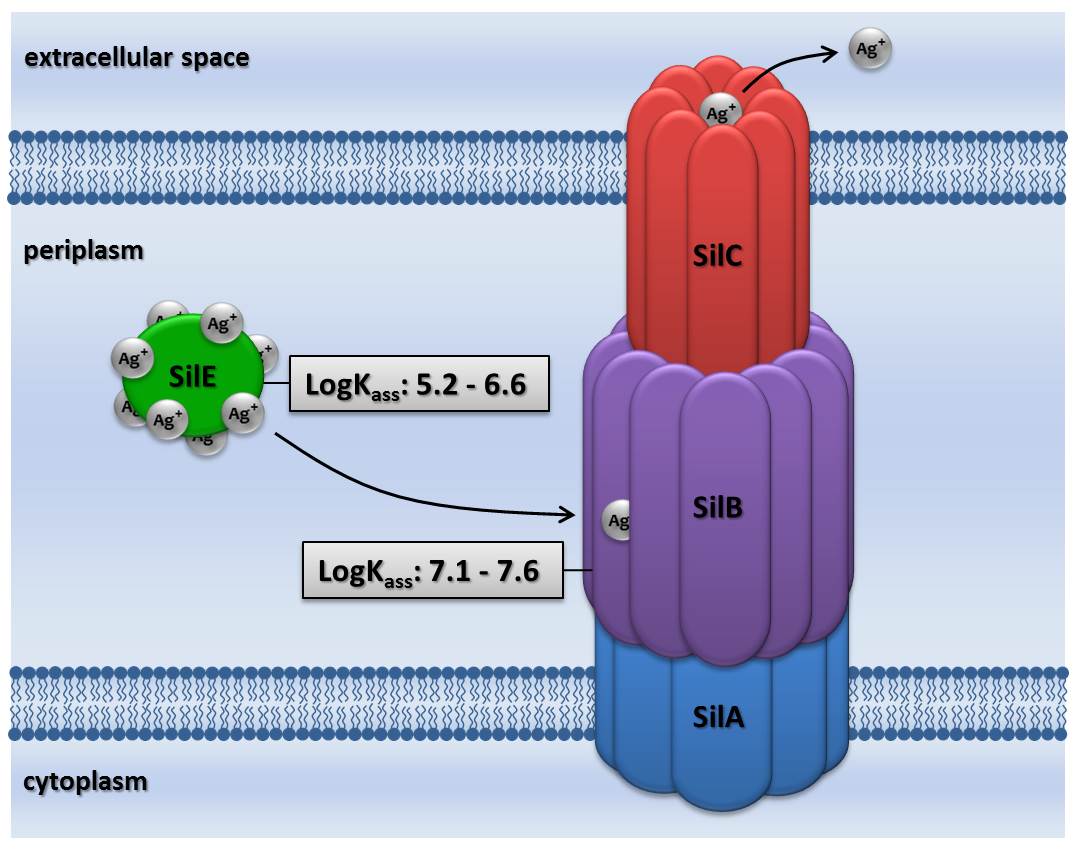Model Peptide Studies of Ag+ Binding Sites from the Silver Resistance Protein SilE
The silver cation Ag+ and its compounds have been known for their antibacterial properties. However, an increasing number of reports have highlighted the emergence of silver resistant bacterial strains isolated from burn care centers or silver contaminated media. The resistance is provided by the SilCFBA transporter, which contains eight proteins that act together to export silver ions. Among them, the SilE protein is the only one of which the role is still unknown, although it is mandatory to provide the resistance.
A model peptide study identifies and characterizes several Ag+-binding sites of the bacterial silver resistance protein SilE, providing new insights on the Ag+ coordination sphere and on the physiological role of the protein.1

Figure 1: Schematic representation of the potential silver ion transfer between SilE and SilB proteins, based on the silver affinity gradient between the two partners.1,2
[1] Model Peptide Studies of Ag+ Binding Sites from the Silver Resistance Protein SilE”, V. Chabert et al., Chem Commun., 2017, accepted.
[2] Structural and Functional Investigation of the Ag+/Cu+ Binding Domains of the Periplasmic Adaptor Protein SilB from Cupriavidus metallidurans CH34”, P. Urbina et al., Biochemistry, 2016, 55, 2883-2897.